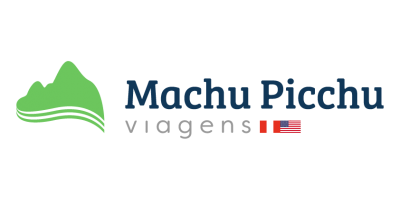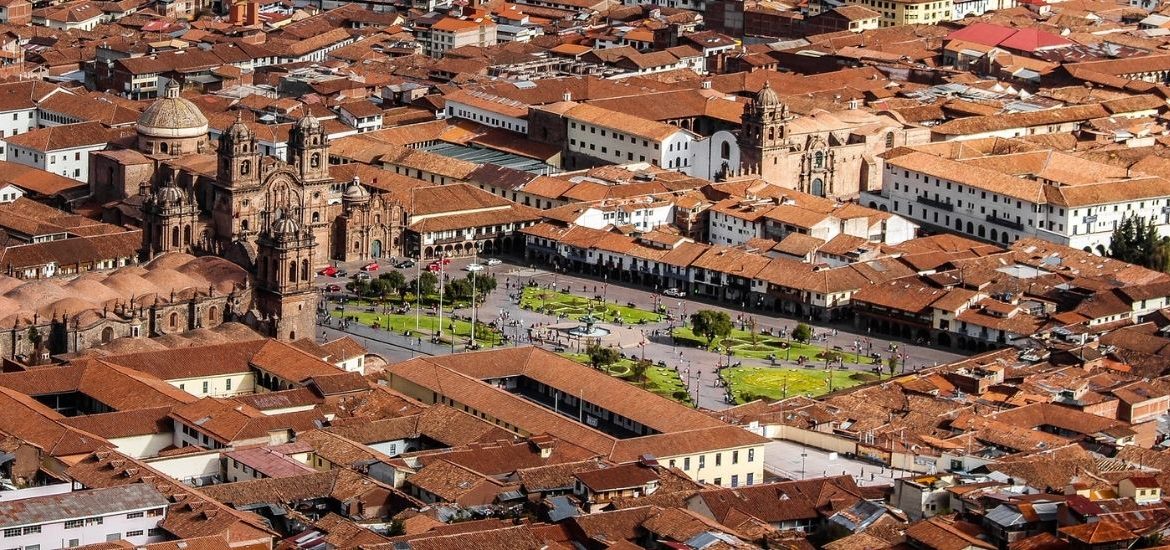If you’re traveling to Peru for the first time, then it’s most likely that you’ll be visiting the Cusco imperial city and here we are to teach you a bit of all the amazing things to do there! As most travelers believe that Cusco is all about Machu Picchu, let us tell you that there’s so much more to explore than what you already know.
Since Cusco was the capital of the Inca Empire, the pre-Columbian city had an incredible infrastructure, with residential, ceremonial, administrative, and public sectors arranged in the shape of a cougar. Unfortunately, most of these Inca buildings were entirely destroyed, while others remain as the foundations that hold the current colonial constructions.
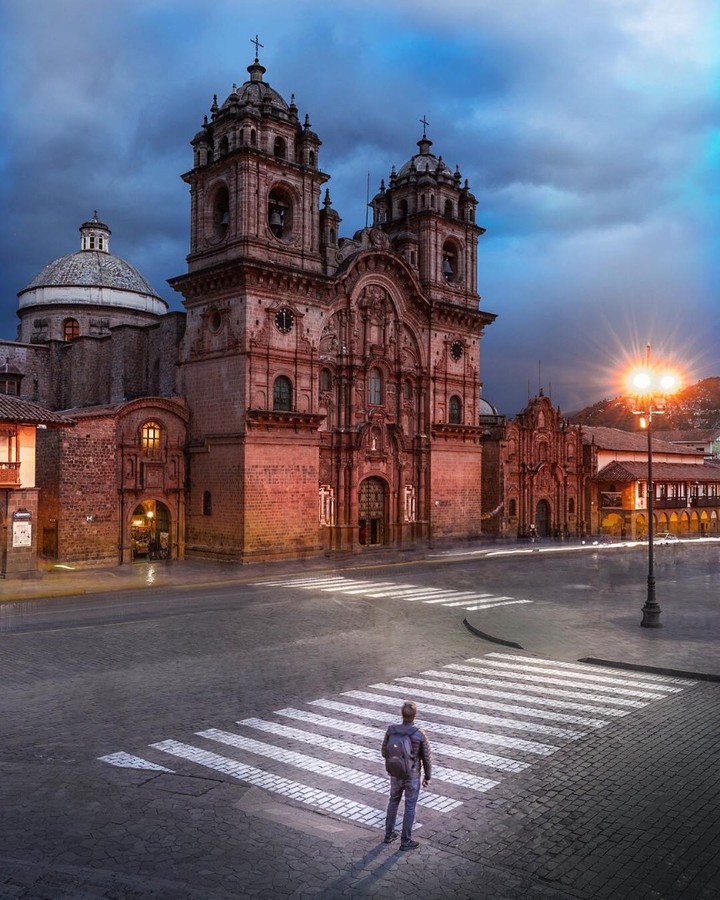
And even though Cusco has been incredibly damaged by several earthquakes, the Inca structures were the ones that have withstood until the current date. For that reason, the Cusco historic center has authentic architecture, with both eras harmonically combined into the most visually and historically striking old town in Peru.
Luckily for you, we have gathered 10 of the most important attractions within the city so you can plan the perfect travel itinerary!
1|Visit Plaza de Armas
As we mentioned above, the Inca Cusco city was distributed to resemble the shape of a cougar, and the Plaza de Armas was designated as its heart. During the Inca Empire, it was known as “Huacaypata” a ceremonial center intended for the worship of the dead and it was twice the size it is today.
The palaces for the most renowned Inca rulers were built in its surroundings. However, during the colonization process, the Spaniards built churches, houses, and administrative centers on top of these ancient structures.
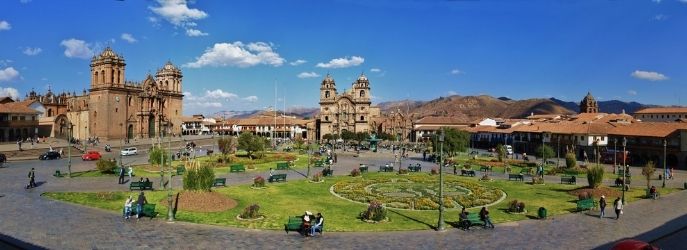
Currently, religious festivities are celebrated every year in Plaza de Armas, as it was during the Inca and Colonial era. The famous main square is considered one of Cusco’s treasures due to its authentic urban scenery where the modern and ancient worlds collide.
Nowadays, the Plaza de Armas is surrounded by imposing religious buildings and other inca-colonial constructions that you should not forget to visit.
2|Discover the Coricancha Temple
Also known as the Temple of the Sun, the Coricancha was a sacred place to the Inca civilization where gold ornaments adorned the whole structure in honor of the Sun God, Inti. Unfortunately, the temple was sacked and all of those relics were lost during colonization.
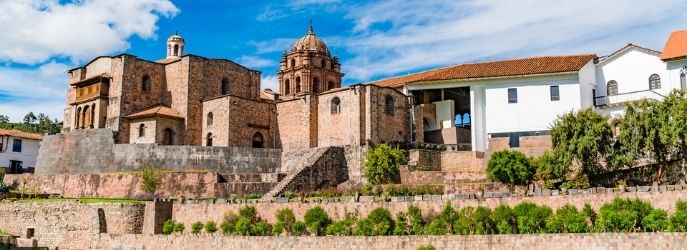
During Inca times, it was the region’s main worship temple. Due to the Spanish conquest, most of its structure was destroyed, and the site was designated to Juan Pizarro, who then donated it to the Dominicans who later built the Santo Domingo Convent on top of its remains.
The Qoricancha temple is one of the perfect examples of the Inca and Colonial fusion. Currently, this site remains a paid tourist attraction and you can visit it with our exclusive tour through Cusco’s principal archeological sites.
3|Explore the San Blas Neighborhood
If you’re in Cusco, the San Blas neighborhood is one of the attractions within the historic center that you definitely can’t miss. This is the oldest barrio in Cusco and comprises a beautiful colonial architecture with cobbled stone streets from edge to edge.
Besides, San Blas is also known as the Artisan Neighborhood of Cusco since it holds the most renowned artists in the region, art galleries, workshops, coffee shops, and local clothing designers. Therefore, if you’re looking for the best souvenir to take home this is the place to go!
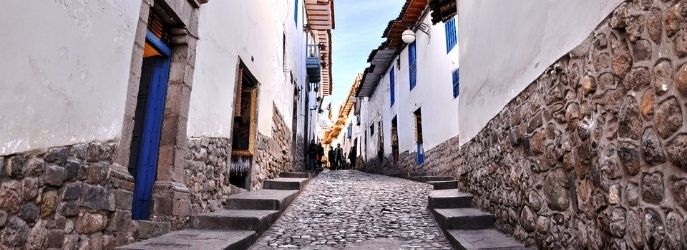
There’s a lot to visit in the beautiful neighborhood, which is why we have gathered four of the unmissable attractions within the artisan hub:
- Templo de San Blas
Located right at the heart of the San Blas neighborhood lies one of the most impressive colonial-in-ca structures of the Historical Center of Cusco. The San Blas Temple is certainly one of those hybrid constructions composed of a pre-Columbian foundation and a colonial-Andean architecture.
Address: San Blas Plaza, Cusco. - Museo Hilario Mendívil y Familia
As aforementioned, Hilario Mendivil was a famous artisan along with his wife Georgina Dueñas. They had a distinctive style to portray religious figures with elongated necks and serene faces.
Address: Plazoleta de San Blas 634, Cusco. - Casa de Mérida
Another gallery of an important artisan of the 20th century, whose artwork had a distinctive characteristic since he used to portray religious figures with disproportionate hands and feet.
Address: Carmen Bajo,111, Cusco. - San Blas Viewpoint
It’s located a few meters away from Plazoleta San Blas, from this viewpoint you’ll get to appreciate the Cusco Historic Center’s beautiful scenery.
Address: Kiskapata, Cusco.
4|Go by the Hatun Rumiyoc Street
As we mentioned several times, Cusco’s center has a hybrid architectural style, where ancient Inca constructions are the base of the colonial buildings we have today. The Hatun Rumiyoc Street is one of the perfect examples of this beautiful combination.
This narrow street connects Plaza de Armas with one of the entrances to the San Blas neighborhood. It is by far the most tourist street in Cusco since it gathers a lot of artisan shops and a beautiful colonial-inca scenery.
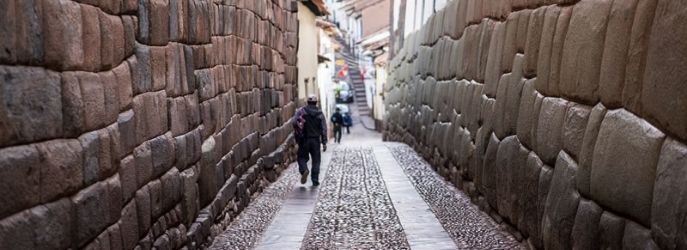
There’s also the so-called twelve-sided stone, which is an impressive example of Inca engineering knowledge since all the surrounding rocks were carved perfectly to fit in every one of its corners. So, if you happen to pass by this street, you’ll also get the opportunity to get a nice souvenir or even an alpaca wool sweater.
5|Spot Cusco’s ancient Inca Palaces
While talking about the Inca Palaces, many people may think of Sacsayhuaman, Tambomachay, and other archeological sites around Cusco. However, what they didn’t know was that they were walking among them since Cusco is not only composed of colonial architecture and stones stolen from the sacred places of the Incas.
Besides, the Imperial City lies underneath most of those constructions. The Inca architecture was characterized by its anti-seismic activity, which somehow withstood centuries of earthquakes, unlike some colonial buildings that had to be reconstructed several times.
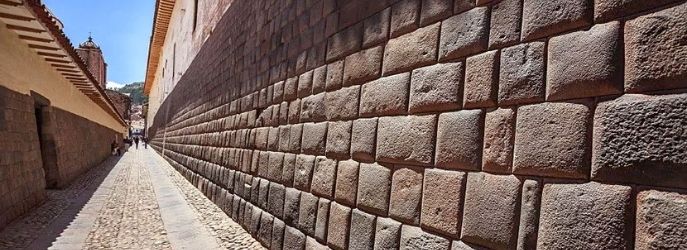
Here we have listed the most important Inca Palaces with some of the information collected by some historians and archeologists in Peru:
- Qasana
It used to be the former residential palace of Pachacutec, the Inca emperor who ordered the construction of Machu Picchu. Qasana was located in the main square surrounding area; it had an extension that spread through the Portal de Panes, Tecsecocha, Tigre, Procuradores, and Plateros streets.
After the Spanish conquerors gained control over Cusco, those lands were owned by Francisco Pizarro. However, there’s not much left of the structure except for the foundations of the Inca structure. Nowadays, the site is composed of several restaurants, bars, nightclubs, and tourism agencies. - Qoraqora
The Palace was located just next to the Qasana Palace, which front faced Plaza de Armas. According to chroniclers, it was constructed for Inca Roca, the sixth Inca ruler of the Empire. After the arrival of the Spanish, the site was assigned to Gonzalo Pizarro.
Colonial residencies were built on top of the remains of the palace, and only its foundations can barely be appreciated. Currently, the area of the site comprises several tourist establishments, bars, coffee shops, and restaurants. - Kiswar Kancha
According to historians, it was the greatest Inca palace situated in the surroundings of the main square, it belonged to the Inca Wiracocha and was composed of several buildings and courtyards. It was located in the area of the Cathedral of Cusco and the Jesus, Maria, and Jose Temple. Unfortunately, there is nothing left of this structure.
6|Find the best souvenirs at San Pedro Market
For those looking to get fully immersed in the diverse culture of Cusco, you surely wouldn’t like to miss the chance to visit one of the most significant local markets in the area. The San Pedro Market is recognized for its artistic expression, where different artisans gather to sell colorful woven items.
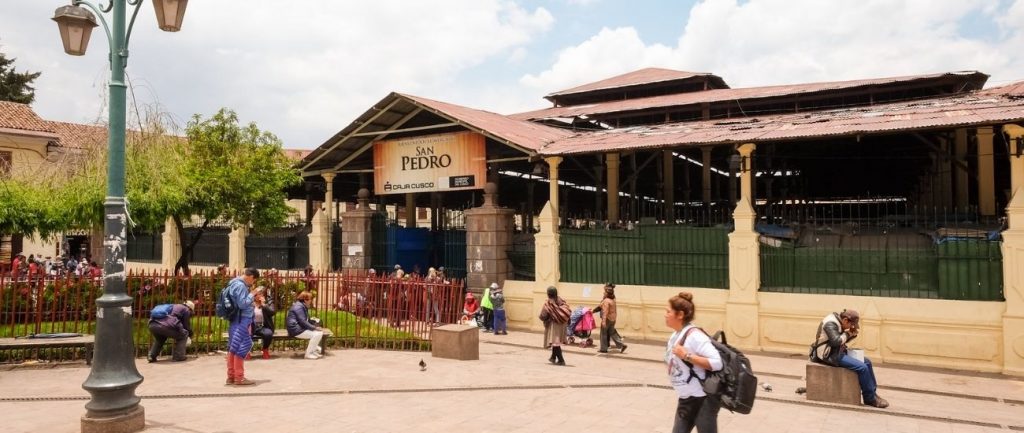
However, that’s not all it has to offer since the whole market is divided into several sections where they sell food, beverages, vegetables, meat, and many other products.
If you’re on the hunt for the best souvenir to take home, then you’ll certainly find it in this place. Here you can choose between clothing options, ornaments, hats, and much more.
7|Get to know about our history in the Inca Museum
Casa Almagro is the headquarters of the Inca Museum, owned by the San Antonio de Abad University. The site exhibits the largest pottery collection of the Inca culture, Inca mummies, as well as pre-Inca metal and gold work.
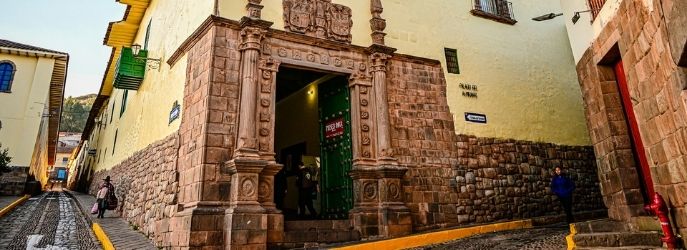
The so-called Admiral’s House dates back to the decade of 1580, it was home to the Spanish conqueror Diego De Almagro and later served as the residence of Admiral Francisco Aldrete Maldonado, whose family shields are carved on top of the outstanding Renaissance main door.
It was the Palace of Huascar, the penultimate emperor of the Tahuantinsuyo. Apparently, the structure was so impressive during the Inca times that they specifically reserved it for Diego Almagro. Unfortunately, there are no more records regarding these Inca ruins, except for some mentions in a few chronicles.
8|Visit the Machu Picchu Museum: Casa Concha
The Machu Picchu Museum also called “Casa Concha”, offers a glance at how life could have been in the famous citadel of the Incas, though some things have remained a mystery until the current date. The site also holds a collection of colonial art, as well as pieces and sculptures from the colonial era.
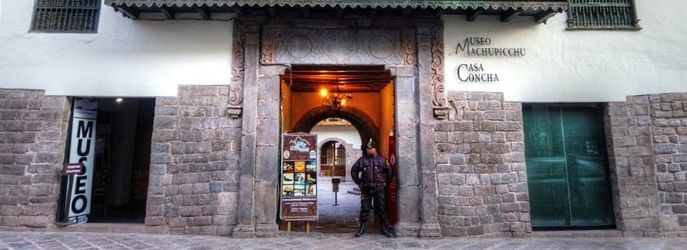
It is a colonial structure built on top of one of the most significant Inca settlements, the palace of Tupac Inca Yupanqui, a descendant of Pachacutec. The famous Inca palace was an enormous structure built to be distinguished from the former Inca rulers.
Unfortunately, there is not much information about the Inca remains except for some of the Inca walls that remained as the foundations of the current colonial building we have today.
9|Explore the Sacsayhuaman Ceremonial Fortress
The impressive megalithic structure is located on the outskirts of Cusco. It is considered one of the perfect engineering works of the Inca civilization. However, most of its structure was destroyed during the construction of the colonial Cusco, but only the heaviest and largest stones remained.
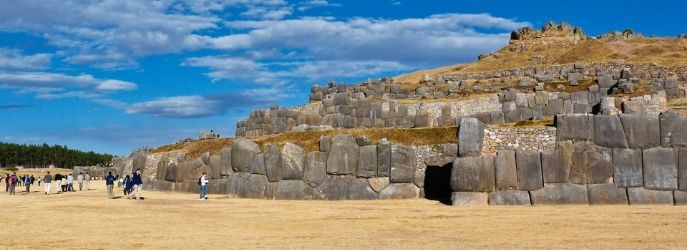
According to historians, it took 50 years and around 20,000 men to build the enigmatic structure. Some of the remaining stones can reach up to 9 meters in height and weigh over 125 tons. There are so many mysteries revolving around the Sacsayhuaman complex and we have the most complete guide for you! Make sure to read it while you’re here.
10|Discover the Qenqo Temple
It is located three kilometers away from Cusco City and it’s one of the largest Huacas found in the region. The archeological site was a sacred location and is believed to have been a place where the Incas performed sacrifices and mummifications in honor of the Sun God Inti.
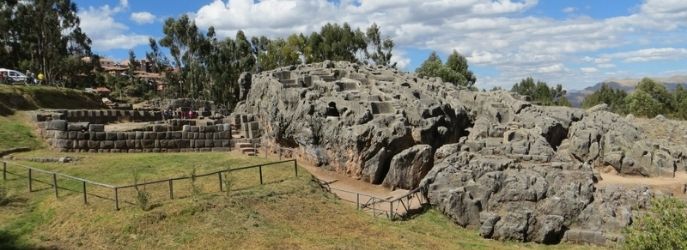
The Qenqo ceremonial center comprehends large carved rocks forming a cave shape, its interior is decorated with three representative figures of the Andean cosmology: The condor, the cougar, and the snake.
There are several inca ruins spread around Cusco City and if you’re eager to know everything about them, here’s an Archaeological City Tour that will take you through the history of the Incas in the so-called Imperial City.
Cusco is certainly the most diverse travel destination in Peru, here you’ll find history, culture, and impressive natural wonders that you simply can’t miss. For that reason, we have prepared the
Viagens Machu Picchu, journeys that inspire, moments that last.Spanish > Viagens Machu Picchu English >Viagens Machu Picchu Portuguese > Viagens Machu Picchu
